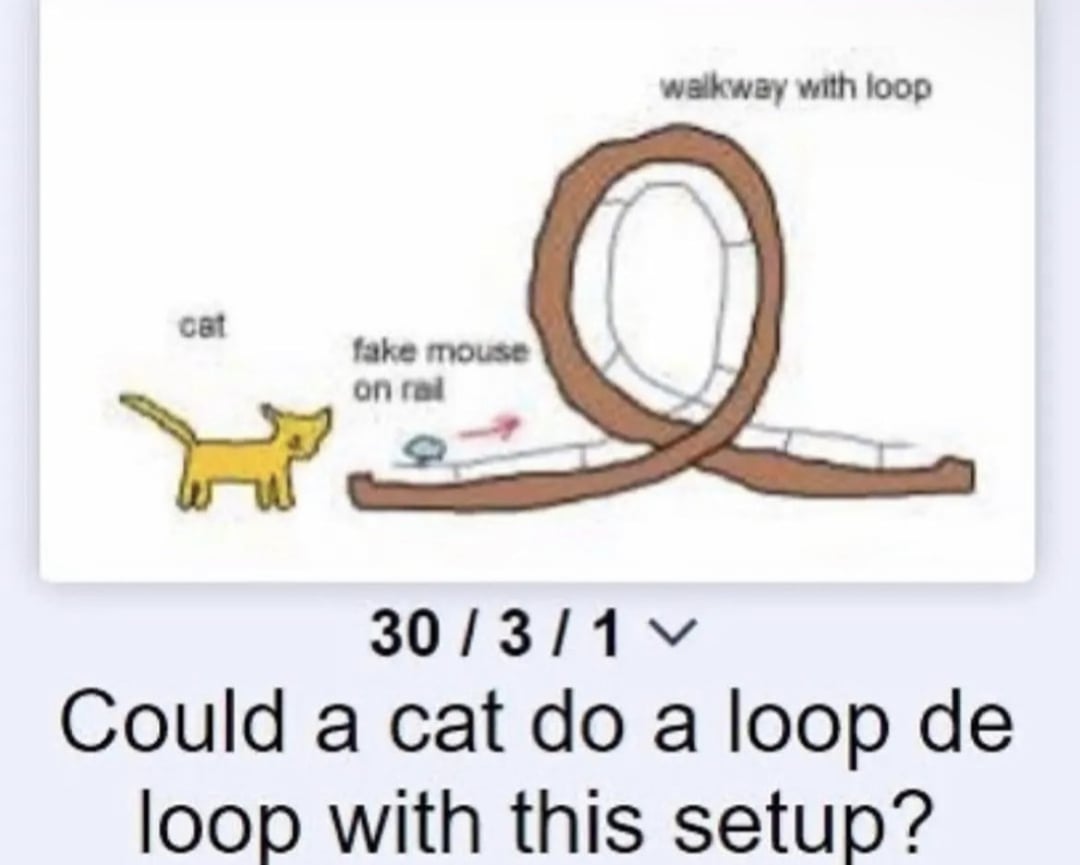this post was submitted on 15 Oct 2023
425 points (97.8% liked)
Memes
45180 readers
1499 users here now
Rules:
- Be civil and nice.
- Try not to excessively repost, as a rule of thumb, wait at least 2 months to do it if you have to.
founded 5 years ago
MODERATORS
you are viewing a single comment's thread
view the rest of the comments
view the rest of the comments

The cat is moving in a circle, so it has a centripetal acceleration and a centripetal force. At the apex of the loop, that force is the sum of gravity, and resistance from the track. The track force is greater than or equal to zero, so acceleration due to gravity is less than or equal to the total centripetal acceleration.
g ≤ v²/r
So,
r ≤ v²/g
Taking top speed of a cat as 8.278m/s (from Wolfram Alpha), and g on earth as 9.81m/s², this gives us r ≤ 6.99m. So long as the cat can maintain its top speed all around the loop, it can successfully do a loop of up to 14 meters diameter. This is a lot bigger than I expected, to the extent that I suspect some flaw in my reasoning.
I get the same math... Seems fucky but... This is assuming the sum of centripetal acceleration and gravity at the peak of the loop is zero. It may be physically possible for a cat to learn to manage a loop with such velocity but I imagine a cat wouldn't be able to maintain a stride through a zero-g portion of the loop the first time it tried it.
So, instead let's throw an assumption that the cat must maintain at minimum sum of -1g at the maxima of the loop. That may be badly phrased, assuming the cat must have at minimum a net force of at least one g between it's paws and the surface of the loop it was currently using to accelerate...
3.5 meters = 11.5 feet
Radius, so still a freaking 7 meter diameter loop feels incredible...